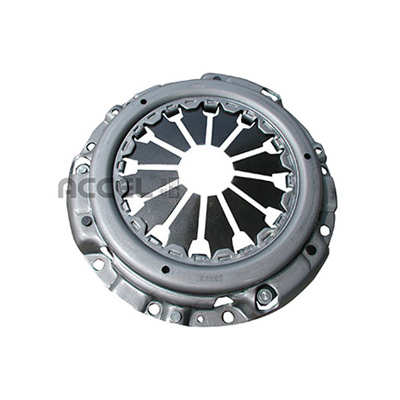- Arabic
- French
- Russian
- Spanish
- Portuguese
- Turkish
- Armenian
- English
- Albanian
- Amharic
- Azerbaijani
- Basque
- Belarusian
- Bengali
- Bosnian
- Bulgarian
- Catalan
- Cebuano
- Corsican
- Croatian
- Czech
- Danish
- Dutch
- Afrikaans
- Esperanto
- Estonian
- Finnish
- Frisian
- Galician
- Georgian
- German
- Greek
- Gujarati
- Haitian Creole
- hausa
- hawaiian
- Hebrew
- Hindi
- Miao
- Hungarian
- Icelandic
- igbo
- Indonesian
- irish
- Italian
- Japanese
- Javanese
- Kannada
- kazakh
- Khmer
- Rwandese
- Korean
- Kurdish
- Kyrgyz
- Lao
- Latin
- Latvian
- Lithuanian
- Luxembourgish
- Macedonian
- Malgashi
- Malay
- Malayalam
- Maltese
- Maori
- Marathi
- Mongolian
- Myanmar
- Nepali
- Norwegian
- Norwegian
- Occitan
- Pashto
- Persian
- Polish
- Punjabi
- Romanian
- Samoan
- Scottish Gaelic
- Serbian
- Sesotho
- Shona
- Sindhi
- Sinhala
- Slovak
- Slovenian
- Somali
- Sundanese
- Swahili
- Swedish
- Tagalog
- Tajik
- Tamil
- Tatar
- Telugu
- Thai
- Turkmen
- Ukrainian
- Urdu
- Uighur
- Uzbek
- Vietnamese
- Welsh
- Bantu
- Yiddish
- Yoruba
- Zulu
11월 . 17, 2024 00:47 Back to list
timing belt timing chain
Timing Belt vs. Timing Chain Understanding the Differences and Making the Right Choice
When it comes to the inner workings of an engine, two critical components often surface in discussions the timing belt and the timing chain. Both play essential roles in synchronizing the crankshaft and camshaft to ensure the engine runs smoothly. However, they do so in different ways, and understanding these differences can help car owners make informed decisions about maintenance and repair.
What is a Timing Belt?
A timing belt is a flexible rubber band-like component equipped with teeth on its inner surface. It connects the crankshaft to the camshaft in an internal combustion engine, ensuring that they operate in sync. Timing belts are typically made from a combination of rubber and other materials, providing durability while maintaining flexibility. Because of their design, they can produce less noise than timing chains and are lighter in weight, which can contribute to improved fuel efficiency.
The timing belt operates under a specific tension provided by tensioners, and because it is made of rubber, it is prone to wear and tear. Typically, car manufacturers recommend replacing timing belts every 60,000 to 100,000 miles, depending on the vehicle's make and model. If a timing belt fails, it can lead to severe engine damage, often referred to as interference engine failure, where the pistons and valves collide, resulting in costly repairs.
What is a Timing Chain?
In contrast, a timing chain is a robust metal component that drives the same synchronization between the crankshaft and camshaft. Much like the chain on a bicycle, a timing chain uses links to create a secure and durable connection. Chains are often found in engines that require long-term reliability due to their ability to withstand high temperatures and significant stress, making them less susceptible to stretching and wear compared to belts.
Timing chains typically have a longer lifespan than timing belts, often exceeding 100,000 miles with proper maintenance. However, they can require occasional adjustments to maintain tension, and if not serviced properly, they can lead to significant engine issues. While they are generally more durable, a timing chain can also fail—usually due to lack of lubrication or if the engine is poorly maintained.
Key Differences Between Timing Belts and Timing Chains
timing belt timing chain

1. Material and Design Timing belts are made of rubber, while timing chains are made of metal. This difference contributes to the contrasting durability and maintenance needs of each component.
2. Lifespan Generally, timing chains last longer than timing belts. While manufacturers recommend replacing timing belts around 60,000 to 100,000 miles, timing chains can often function effectively for the life of the engine if adequately maintained.
3. Maintenance Requirements Timing belts require more frequent replacements due to wear, whereas timing chains may only need occasional inspection and maintenance.
4. Cost In terms of replacement, timing belts are usually less expensive to install than timing chains. However, if a belt fails and leads to more significant engine damage, repair costs can soar.
5. Noise Timing belts operate more quietly than timing chains. Drivers can enjoy a quieter ride with a well-maintained timing belt system.
Making the Right Choice
When choosing between vehicles with timing belts or chains, consider your driving habits and how much maintenance you're willing to take on. If you prefer low-maintenance options and plan to keep your car for many years, an engine with a timing chain might be the way to go. On the other hand, if you are looking for a newer vehicle with better fuel efficiency and don’t mind keeping up with maintenance schedules, a timing belt can be an excellent choice.
Regardless of your selection, understanding the importance of these components cannot be overstated. Regular maintenance should always be a part of your car care routine, ensuring that whether it’s a belt or a chain, your engine remains in optimal working condition. Both timing belts and chains have their pros and cons, but with proper care, either option can lead to a reliable and efficient engine.
-
Korean Auto Parts Timing Belt 24312-37500 For Hyundai/Kia
NewsMar.07,2025
-
7PK2300 90916-T2024 RIBBED BELT POLY V BELT PK BELT
NewsMar.07,2025
-
Chinese Auto Belt Factory 310-2M-22 For BMW/Mercedes-Benz
NewsMar.07,2025
-
Chinese Auto Belt Factory 310-2M-22 For BMW/Mercedes-Benz
NewsMar.07,2025
-
90916-02660 PK Belt 6PK1680 For Toyota
NewsMar.07,2025
-
drive belt serpentine belt
NewsMar.07,2025

